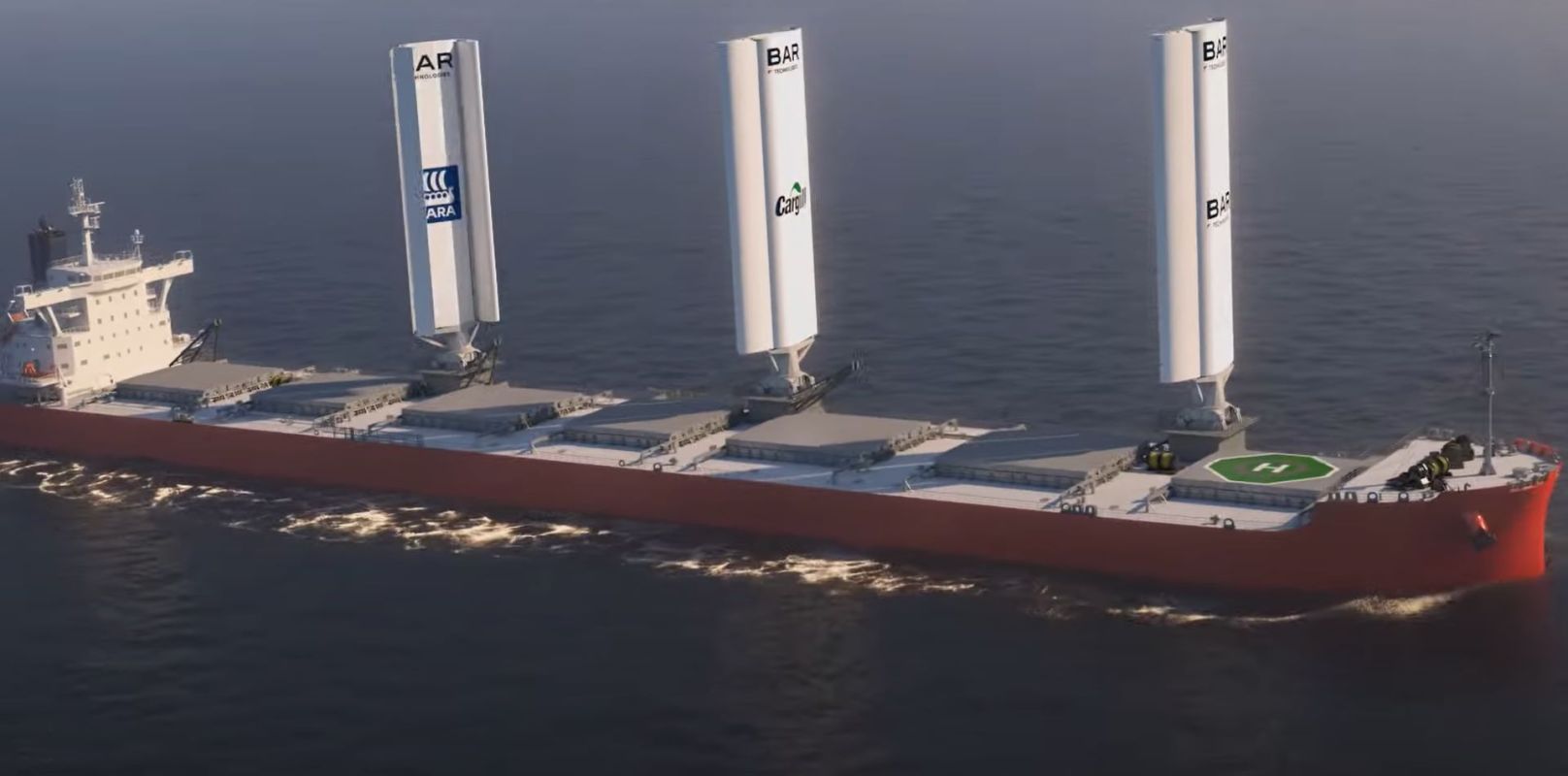Horizons on the high seas are again being filled with sails.
The modern versions of these wind catchers are inspired by the International Maritime Organization's goals to reduce heat-trapping air pollution by half (from 2008 levels) by 2050 and eventually eliminate them altogether.
Cargo haulers transport about 90% of our commerce. According to the European Commission, those fleets produce around 3% of the global air pollution that warms the planet. New sail technology could provide the route to greatly decrease, or even snuff out, the air pollution generated during overseas transport.
"We're always used to going the shortest way," said Jan Dieleman, president of ocean transportation at Cargill, said in a Bloomberg report. "Now, you might want to go the way where there's more wind."
The Cargill-chartered Pyxis Ocean is sailing with high-tech wind catchers made by the United Kingdom's BAR Technologies, with funding from the European Union. The company's WindWings innovation is billed as customizable sails that include route optimization ability. If the Pyxis run has smooth sailing, Cargill officials plan to outfit 10 more ships with them, Bloomberg reported.
Meanwhile, Oceanbird in Sweden is developing a modern sailing ship to be in use by 2027, called the Orcelle Wind. Oceanbird said the project aims to cut 60% of the pollution produced by similar-sized vessels without sails.
These modern sails are not the only effort in the industry to cut air pollution. China-based COSCO Shipping is moving toward electric vessels. The Seawing is another innovation geared to harness wind power in the shipping industry, utilizing an automated kite system.
A video clip on the BAR Technologies website shows Cargill's sails, made from steel and composite glass, moving from the upright wind-catching position to a horizontal storage configuration on the deck. They can be moved around to allow for cargo to be deposited in the ship's hold.
The sails look basic enough. They are large, 123-foot vertical rectangles. Most of BAR's photos and videos show three or four to a ship. The Pyxis has two of them.
BAR experts said the sails can be retrofitted onto existing ships, like the 5-year-old Pyxis. The company also has contracts in place to include sails on new vessels, per the BAR website.
A WindWing sail can save around 1.5 tons of dirty, oil-based fuel from being burned daily. Three sails on a vessel of that size could result in a 30% savings on fuel, all per Bloomberg.
"It's going to make the new fuels a lot more affordable," Dieleman told Bloomberg. "Wind is there for free."
In late August, the Pyxis was unfurling the sails on a journey to Brazil as an early test run.
"The boardroom of shipping has gone through quite a transformation over the last few years," said Gavin Allwright of the International Windship Association, a nonprofit with a goal of supporting wind propulsion in commercial shipping. "They get the climate issue, they get the problem of pollution and the need for change."
"But they also have to give value to their shareholders," he added, "and one of the big things with wind is that it's a free energy source. It's a propulsion system that will actually pay for itself."
Join our free newsletter for weekly updates on the coolest innovations improving our lives and saving our planet.









